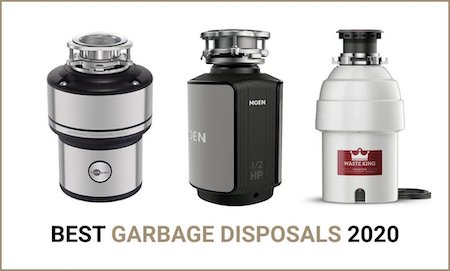Special Feature: Products Sally Recommends
how to install a garbage disposal

Garbage disposals, although not an ancient entity but today’s ultimate need has proven a master to stumble people, who spend hundreds of dollars not only to buy an updated model but also to request a plumber for urgent installation. If, after this complete guide, you are at the mercy of a plumber to install your garbage disposal, you will no longer be at his mercy.
I’m going to make you a pro in garbage disposal matters by giving hands-on experience of an old disposal’s removal and installation of a repaired or a new one. So, gather your tools, either buy or borrow from your friend, and start this garbage installation task by following this complete guide.
Tools Needed
You must have the following tools to accomplish the removal and installation of garbage disposal.
- Screwdriver
- Wrench
- Plumber’s putty
- Electrical wires
Removing an old garbage disposal
If you don’t have an already installed garbage disposal, you may skip these steps and go below to the section ‘Garbage disposal installation’ otherwise just work on these three steps and your already fixed disposal will be installed.
Detach hose and waste pipe – First of all, take a screwdriver and separate the dishwasher hose from the disposal unit and then remove the waste pipe attached to it by unscrewing the nuts with a wrench. Before detaching this setup, make sure you have turned the power OFF and the unit is empty.
Detach disposal unit – After the first step, you will see there will be no pipe attached to the disposal. Now, loosen the mounting rings with a screwdriver and pull the unit out.
Detach mounting assembly – Pipes are gone, the unit is detached, here you have to clear the sinkhole. Remove the mounting assembly and clear it to attach a new flange, gasket, and new plumber’s putty.
Are you finished? That’s great! It’s time to install a new disposal.
Garbage disposal installation
Keep your new or repaired garbage disposal at your side and start making these connections to install your unit.
- Garbage disposals have assembly fitting nuts and rings that need to be attached to the sink to firmly lock the unit with the sink. As the disposal is underneath the sink, the sink flange and mounting ring hold the unit in place and a tightly fitted drain also prevents leakage.
- To firmly fit the flange, place plumber’s putty at your hand and make a roll of about ½ inches. Seal the sink opening by placing it around the drain hole and inserting sink flange over there. You may also press the putty’s roll-on flange and then place in the hole.
- Press the flange to settle and slide gasket and mounting ring on it. Tighten down this assembly by tightening the screws and applying a bit of pressure.
- When you fix the flange by screwing it, there will be extra putty protruding from it. Clean that messy putty with a damp cloth or towel and make the surface smooth.
- Now the disposal unit is about to be attached with the sink, but you have to check the connections first. Open it up from the bottom by removing the cover plate and see if the wires are connected. Some of the units have already attached connections and you don’t need to do anything with it but if there are loose wires, connect them respectively. Most of the disposals have black and white wires, so connect the white wire with white and black with black wire.
- When connections are carefully attached, place the cover plate at the bottom from where you removed it.
- If your disposal has the option of dishwasher drain, also make its adjustments on the top of the disposal chamber.
- All of the preliminary installations are done, and you are about to finish the task by aligning the unit with the sink flange assembly from the underside of the sink. Mount it well on the collar of the disposal but don’t overtighten it and gently apply any pressure to check its placement.
Now we are finished with the installation of garbage disposal, but the last and most important thing is to check its leakage. If you wind it up and find leakage, later on, it will demotivate you and spoil your efforts. So, turn the faucet on and drain some water from the sink to observe its flow. If there is water outside the disposal body, you are free to pack your tools and enjoy the leakage-free installation.
Note: This information was accurate when it was published. Please be sure to confirm all rates and details directly with the businesses in question before making your plans.



